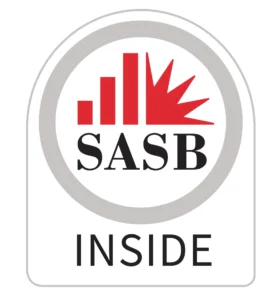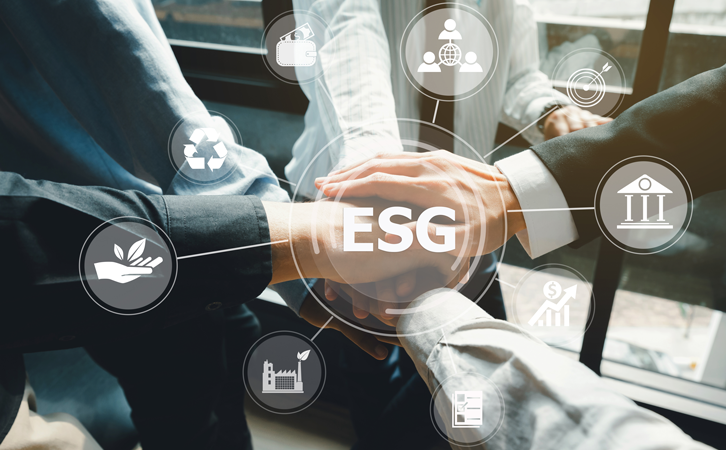by Phil Molé, MPH
As more companies transition to a business management strategy based on Environmental, Social, and Governance (ESG), they quickly encounter the challenges of managing data. The most widely followed ESG disclosure standards and regulations all establish expectations for data collection, management, and reporting, especially on climate-related risks, energy usage, and greenhouse gas (GHG) emissions. Investment-grade data (or sometimes, “investor grade data”) has become a kind of shorthand for data that serves the purposes of stakeholders, including the investment community. But ESG and sustainability managers often have a hard time finding guidance about how to achieve investment-grade data and getting the right tools to help.
In what follows, you’ll learn the meaning and importance of investment-grade data and the main attributes of ESG software platforms you’d want for collecting and managing your data.
Introducing ESG QuickTakes: A Sustainability E-Newsletter!
Master ESG with our NEW quarterly publication. Get expert insights on regulations, energy management, and sustainability delivered straight to your inbox.
Why is Investment-Grade ESG Data Important?
To understand why investment-grade data is important, you first need some context to help understand why ESG itself is important.
ESG has been around for a while now, but over the last few years it’s gained widespread adoption as a business management framework because of evidence connecting better ESG performance with better business performance. For example, a 2020 Harvard study showed that better ESG performance correlated with higher economic value added (EVA) margin (a measure of profitability), as well as with reduced volatility, as defined by major business disruptions or loss of a majority of shareholder value.
It’s not hard to understand why these relationships exist. A company that successfully builds ESG maturity becomes more efficient, e.g., by reducing utility energy usage and costs associated with management and treatment of wastes, and that reduced spend means increased profitability. Companies with higher ESG maturity not only have their house in order when it comes to basic compliance with EHS regulations but have probably taken a broad approach to managing their risks and opportunities. Consequently, they’re much less likely to have catastrophic events such as major chemical spills that can disrupt business and cause loss of investor confidence.
For these reasons, financial institutions increasingly use a company’s ESG data when deciding whether to provide loans, and investors rely on the data to screen companies they’re considering investing in for risks that may not be evident from traditional financial statements. The evidence that ESG is connected to and predictive of financial performance is the reason that forthcoming ESG disclosure requirements like the Securities and Exchange Commission (SEC) proposed rule in the US, or the European Financial Reporting Advisory Group (EFRAG) standards in the EU, will require affected companies to provide their ESG disclosures on official financial reports such as Form 10-K.

A corollary idea to the notion that stakeholders need ESG data to assess a company’s true level of risk exposure is that the data needs to be good – i.e., accurate and verifiable. That’s what the term investment-grade data really means. If a company has investment-grade data, it has the kind of data that investors can confidently rely upon when making investment decisions. It also follows that a company planning on securing loans or investments to fund future growth and capture market share would have competitive advantages if they had good quality ESG data that demonstrated their maturity.
But what does investment-grade ESG data look like? It’s important to understand this from the onset of your ESG management program to avoid potential complications that could undermine your success.
What are the Main Aspects of Investment-Grade ESG Data?
Perhaps the best overall statement we can make about good ESG data is that it reflects a company’s true ESG performance, rather than just their intentions or aspirations. It is accurate, timely, and complete data that they, their customers, and their potential value chain partners and investors can believe in.
Does your own ESG data make the grade? When reviewing your ESG data management practices and tools, make sure they have these aspects.
Accuracy of ESG Data Collection
Having good ESG data starts with getting good ESG data. Unfortunately, many organizations stumble at this first step, especially when it comes to the very important area of collecting energy data from utility services. As an ESG manager, you need this data to not only accurately track your energy consumption and the sources of energy you’re using, but also to calculate your emissions of GHG Protocol-defined Scope 2 GHGs associated with purchased utility energy.
Unfortunately, many organizations lack streamlined methods of collecting this data, and still rely on hard copy invoices from their utility providers. This process can be time-consuming if you’re responsible for multiple facilities in different locations that use many different utility services. Additionally, manual data entry introduces potential for errors.
Look for ESG software platforms that have utility data integration capabilities that interface with your service provider, and automatically collect and store your utility data. There will be no more manual data entry errors, and no more time wasted making phone calls or sending emails to track down missing bills.
Autodetection of Suspect Data at Point of Entry
There are many reasons why you may get suspect or anomalous data. For example, when it comes to energy data from your utility company, there’s always a slight possibility your utility data will report incorrect data due to errors on their end.
Your data may also be accurate but may be uncharacteristic for reasons you’re not yet aware of, such as a glitch in process equipment that’s causing consumption of an unusually high amount of energy. In either case, you’d want to know about the anomalous data as quickly as possible, so you can identify and correct the source of the problem. The right ESG software helps ensure you quickly spot and address atypical data by immediately flagging it at the point of entry.
Data Assurance Reporting
A big part of the importance of having good data is being able to prove you have good data. Remember, one of the major reasons for the rise of ESG as a business management approach in recent years is due to its usefulness by stakeholders, including financial institutions and investors, as a lens for viewing risks through a wider lens. Data assurance is about documenting that data meets certain quality criteria, and companies may share data assurance reports with both internal and external stakeholders.
When selecting an ESG software platform, look for one that lets users establish custom data validation rules, since different organizations may have different concerns. Also make sure that your ESG platform makes it easy to generate quality assurance/quality control (QA/QC) reports for data integrity verifications.
Simplified Data Calculation
Of course, data doesn’t speak for itself. You often need to conduct calculations using your baseline data to obtain other metrics based on it, such as the Scope 2 GHG emissions derived from your utility data energy consumption. You may also need to present your data in formats required for sharing with internal or external stakeholders, or by standards and regulations that apply to your organization. For example, many organizations follow the Sustainability Accounting Standards Board (SASB) standards, which are now under the authority of the International Sustainability Standards Board (ISSB), and many follow standards developed by Global Reporting Initiative (GRI).
There are also more regulatory-driven ESG disclosures coming. At the present time, SEC in the US is preparing to issue a final rule that would require all public companies to disclose information about their management of climate risks, including their emissions of Scopes 1 and 2 GHG emissions, and Scope 3 GHG emissions if the organization determines them to be material to business. Meanwhile in the EU, EFRAG has already finalized its first batch of ESG disclosure standards under the authority of the Corporate Sustainability Reporting Directive (CSRD), and the standards will now come into force in early 2024 for many EU companies, as well as foreign companies who conduct threshold levels of business within the EU. Companies subject to one or more mandatory disclosure frameworks should prepare by focusing on common areas of focus across these frameworks, one of the most significant of which is disclosure of all three scopes of GHGs.
Make sure your ESG software has the attributes you need to keep up with your disclosure needs. For example, you’ll want software with calculation engines to automatically apply correct emission factors for GHGs based on your energy usage and convert your data to the units you need.
Of course, there’s a continuity between ESG and EHS data management requirements, and to do ESG right, you first need to do EHS well. For example, if you have permits that require more intensive calculations, such as an EPA Major Source/Title V air emissions permit, you’ll have significant work to do in calculating potential to emit (PTE), as well as in calculating amounts of regulated air pollutants emitted for comparison with established permit limits. Some ESG software providers out there only provide ESG software, forcing users to go elsewhere for their EHS management needs and causing gaps in their data management processes. Look for a combined EHS and ESG software platform with efficient calculation engines that facilitate complicated calculations, thereby drastically reducing the time needed to conduct them.
Streamlined Reporting Capabilities
One of the reasons that calculations will be important to you is because they’re necessary to produce the reports you need. Whether these reports are for internal purposes or for applicable regulations that apply to your business, or because of standards your organization has committed to following.
Look for ESG software that enables out-of-the-box reports aligned with major disclosure frameworks and standards such as those published by SASB, GRI, and CDP (formerly Carbon Disclosure Project).

And since you also need to do your own unique reporting that meets the needs of your organization, you’ll also want to make sure that your chosen ESG software platform enables flexible user-controlled reporting templates.
Data Security
Don’t overlook the importance of data security. There’s no point in going through the effort to get and manage good data if you’re not taking the right steps to prevent losing your data. That’s why cybersecurity is an important component of corporate governance.
A software provider that attests their platform to SOC 2 undergoes an intensive third-party audit that usually lasts several months, to ensure that the organization manages its policies and procedures, data infrastructure, and software applications in accordance with the Trust Services Principles and Criteria for Security, Availability, Processing Integrity, Confidentiality and Privacy set forth by the American Institute of Certified Professional Accountants (AICPA).
An additional consideration is that Software-as-a-Service (SaaS) platforms offer more security than on-premises software systems. The reason for this may be clear if you think about a potential incident, such as a fire or an extreme weather event, that damages your facility. If your IT infrastructure is also damaged, you can potentially lose all your most important data. But if you use a cloud-based SaaS software platform, your data is maintained by off-premises, third-party managed data centers, and will remain safe from harm or loss.
Let VelocityEHS Help!
The ESG Solution, part of the VelocityEHS Accelerate® Platform, gives you the support you need to obtain, manage, and report investment-grade ESG data. Our Utility Data Sync capability interfaces directly with your utility providers to automatically collect data, apply correct emission factors, and convert your data to the right units, minimizing potential for error and administrative burdens. The solution also gives you the ability to track all three scopes of your GHG emissions, with reporting capabilities aligned with major ESG disclosure frameworks such as SASB, CDP, and GRI right out of the box.
Our ESG software gives you the assurance you need that your data is accurate and safe, with the ability to lock down data from internal and external analysts and generate QA/QC reports for data integrity verifications. You’ll be able to establish custom data validation rules, and auto-flag suspect data right at the point of entry. Our software is also attested to SOC 2 Type II, to ensure data security and continuity. In addition, adherence to SOC 2 standards ensures that the VelocityEHS solution is closely aligned with a wide range of other national and international data protection requirements, including PIPEDA (Personal Information Protection and Electronic Documents Act), ISO 27001, HIPAA, CSAE 3416 Type 2, ISAE 3402 Type 2, EU’s General Data Protection Regulation (GDPR), Privacy Shield and similar Safe Harbor principles.
Request a demo today to learn more about how VelocityEHS can support you as you build and maintain a world-class ESG management system based on investment-grade data.
